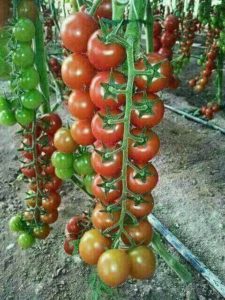Parasitic Diseases on Tomato Plants are:
1. Fusarium Wilt
Fusarium wilt is caused by Fusarium oxysporum fungus. At first, this fungus attacks the root then spread through the vascular tissue. Tomato plants with this disease will wilt then die. Affected vascular tissue will turn brown and hold up water flow from the roots to the leaves thus causing wilted leaves and stems.
During the night, affected tomato plants may still look fresh and healthy, however when the sun comes up and evaporation happens, your tomato plants will wilt. It can happen again until finally your plant dies.
Avoid this disease by using resistant seeds. Usage of plastic mulch can also help. Avoid planting your crop on land where this disease used to reside and wait a while instead.
2. Blight
Blight is caused by Phytophthora infestans fungus. This disease usually attacks tomato plants in high land. The sign of infection is blackish brown specks starting from the tip and sides of leaves then spreading to all surfaces and stems.
Infected plants need to be taken out and burned, don’t bury them. Avoid this disease by choosing fungus-free superior varieties and spraying some fungicides.

3. Rotten Fruit
Rotten fruit is caused by Thanatephorus cucumeris fungus. Infected fruit will have brown specks that will get bigger, concaved, and cracked in the middle.
Rotten fruit can also be caused by Colletotrichum coccodes fungus. The sign of infection is the watery specks that will then get rounded and concaved with purple specks on the fruit part nearest to the stem.
Disease control can happen by choosing resistant seeds. Infected plants need to be burned to kill off the fungus. You can use water to prop your tomato plants so the fruits don’t touch the ground. You can also implement crop rotation. Widely spread infection can be taken care off with fungicides with captaphol active agent.
4. Bacteria Specks
This disease is caused by Xanthomonas vesicatoria. This disease can attack the fruit, the leaves, or the stems. On fruits, it will start of as watery specks that will turn into corky specks. On leaves, it will show as curled and dried leaves. On stems, it will look like grayish long marks.
Avoid this by choosing disease free superior seeds. Crop rotation can also help reduce the probability of an attack. Take out and burn infected plants and spray the rest with bactericide with antibiotics in it.
